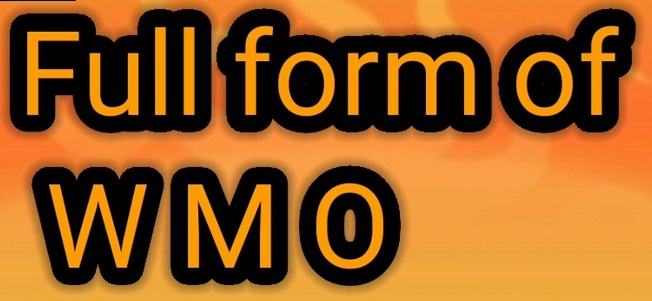WMO FULL FORM
Full Form of WMO : World Meteorological Organization
What is the Full form of WMO?
No:1. The full form of WMO is the World Meteorological Organization.
No:2. The United Nations Specialized Department is responsible for encouraging international cooperation in the fields of atmospheric science, hydrology, climatology and geophysics.
No:3. The WMO comprises 193 nations and territories and facilitates the free and unrestricted exchange of knowledge, data & research among its members of respective meteorological & hydrological institutions.
No:4. The WMO, headquartered in Geneva, Switzerland, is regulated by the World Meteorological Congress, composed of the Member States, which sets policy and goals every four years.
No:5. The Congress is headed by an Executive Council controlled by the President, presently Gerhard Adrian of Germany.
No.-1. Download 15000 One Liner Question Answers PDF
No.-2. Free Download 25000 MCQ Question Answers PDF
No.-3. Complete Static GK with Video MCQ Quiz PDF Download
No.-4. Download 1800+ Exam Wise Mock Test PDF
No.-5. Exam Wise Complete PDF Notes According Syllabus
No.-6. Last One Year Current Affairs PDF Download
No.-7. Join Our Whatsapp Group
No.-8. Join Our Telegram Group
History of WMO
No:1. The WMO developed from a non-governmental body, the International Meteorological Body, established in 1873 as a platform for the exchange of climate research and data.
No:2. The World Meteorological Convention of 1947, that initially proposed the World Meteorological Organization resulted in proposals to change the status and function of the IMO.
No:3. The Convention came into force on March 23, 1950, and the preceding year WMO started operation within the UN system as an intergovernmental organisation.
Main functions of WMO
WMO’s work is to provide the Member States with services and information connected to the weather, climate as well as water via technical and scientific systems. Some of WMO’s significant purposes are provided below :
No:1. Enhance and encourage the implementation and maintenance of systems for the rapid interchange of weather and meteorological information.
No:2. Supporting the standardisation of observations related to meteorology and weather
No:3. Extend meteorology’s application to aviation, shipping, agriculture, water issues and so on.
No:4. Facilitate hydrological operations and collaboration among hydrological and meteorological services.
No:5. Promote meteorological and linked research and training programmes
No:6. Contribute to the formulation of climate, weather and water policies at international and national levels.
MUST READ : NMDC FULL FORM

